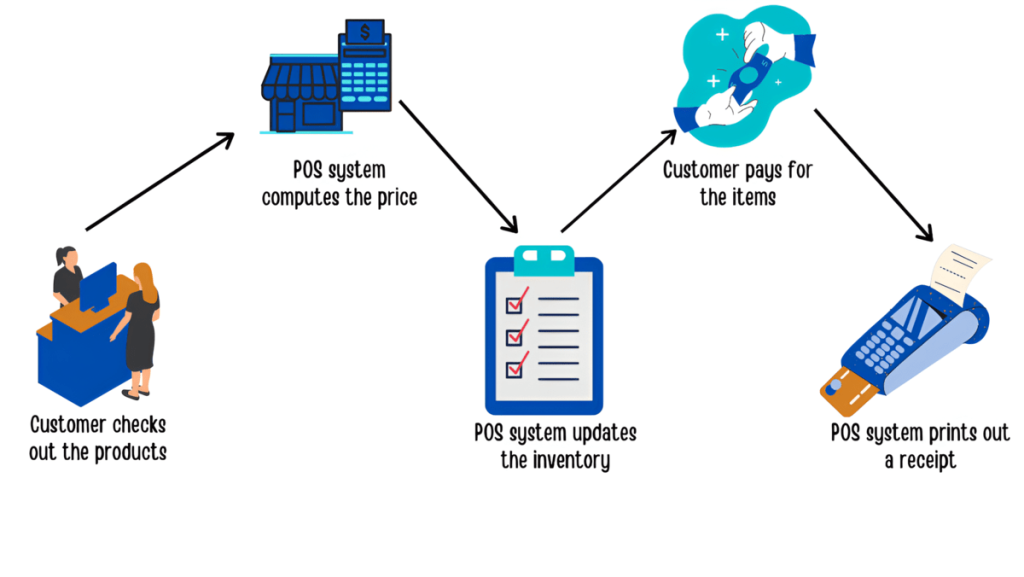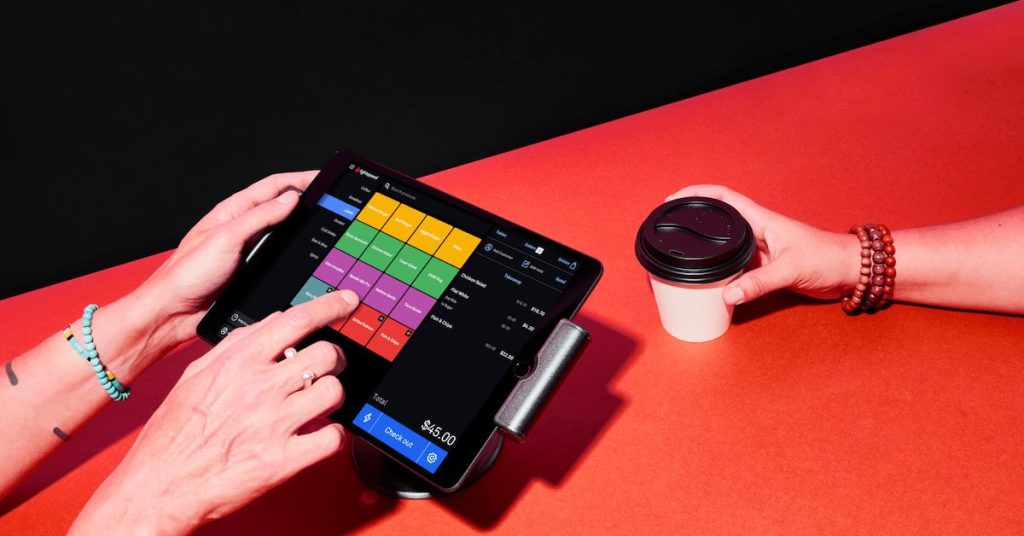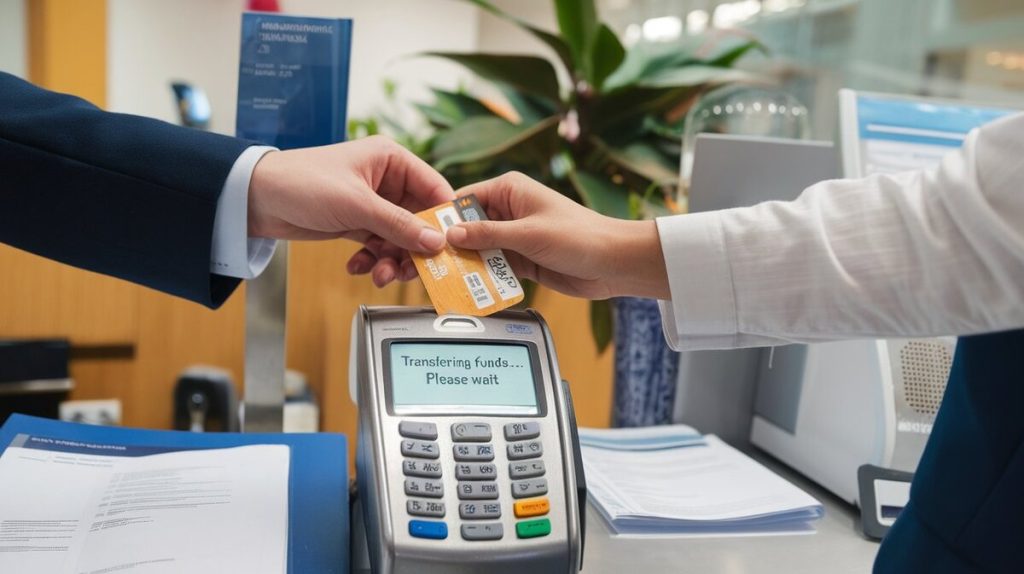Introduction
A Point of Sale (POS) system is essential for any business handling transactions. This article outlines the key aspects of POS systems, including their components, functionality, and benefits, helping you understand how to optimize your business operations.
What is a POS System?
A POS system combines hardware and software to manage sales transactions and related business activities. Here’s what it typically includes:
- Hardware: Devices like terminals, barcode scanners, receipt printers, and card readers. The hardware can be stationary (traditional POS) or mobile (mPOS).
- Software: Manages sales, inventory, customer data, and reporting. Software can be cloud-based, offering real-time updates and accessibility from any device.
Types of POS Systems:
- Traditional POS: Stationary systems used in physical stores.
- Mobile POS (mPOS): Portable systems on tablets or smartphones, ideal for on-the-go sales.
- Cloud-Based POS: Accessible from any device with internet connectivity, offering real-time data synchronization.
How Does a POS System Work?
A POS system manages the entire sales process efficiently:
- Item Entry: Products are scanned or manually entered.
- Payment Processing: Customers pay via cash, card, or digital methods. Modern POS systems support multiple payment methods, increasing flexibility.
- Receipt Generation: A receipt is printed or emailed.
- Data Management: The system stores transaction data for inventory tracking and sales analysis.
Table 1: POS System Components
| Component | Description | Examples |
|---|---|---|
| Hardware | Physical devices used in transactions | Barcode Scanner, Cash Register, Receipt Printer |
| Software | Programs for managing sales data | Inventory Management, CRM, Reporting Tools |
| Payment Processing | Tools for handling payments | Credit Card Terminals, Digital Wallets |
| Cloud Integration | Enables access to the POS system from any device | Cloud-based POS Software |

Key Features of a POS System
Effective POS systems include several critical features:
- Payment Processing: Supports various payment methods including cards and digital wallets. Visa reports that over 70% of consumers prefer digital payments.
- Inventory Management: Automatically updates inventory, reducing errors. Businesses using integrated inventory management systems report a 20% reduction in stock discrepancies.
- Reporting and Analytics: Provides detailed sales reports for better decision-making. Stripe’s analytics tools can boost efficiency by up to 30%.
- Customer Relationship Management (CRM): Tracks customer purchases and manages loyalty programs. Businesses using CRM features in POS systems see a 15% increase in repeat customers.
- Employee Management: Tracks employee hours and sales performance.
Table 2: Key Features and Their Benefits
| Feature | Benefit | Example |
|---|---|---|
| Payment Processing | Enables quick and secure transactions | Supports credit/debit cards, mobile wallets |
| Inventory Management | Reduces manual errors and improves stock accuracy | Automatic stock updates after each sale |
| Reporting and Analytics | Provides insights into sales trends | Detailed sales reports and forecasting |
| CRM | Enhances customer loyalty through personalized service | Loyalty programs and purchase tracking |
| Employee Management | Streamlines workforce management | Tracks hours worked and sales performance |
Benefits of Using a POS System
POS systems offer tangible benefits:
- Efficiency: POS systems speed up the checkout process, reducing wait times and improving customer satisfaction.
- Accuracy: Automation minimizes errors in inventory and sales reporting. Accurate data is crucial for maintaining balanced books and correct stock levels.
- Customer Experience: Modern POS systems enhance the customer experience with quick payments, digital receipts, and loyalty programs. Businesses that implement CRM features report a 20% improvement in customer retention.
- Data Insights: POS systems provide real-time data, helping businesses make informed decisions. Detailed analytics on sales and inventory assist in identifying trends and making strategic decisions.
- Scalability: As businesses grow, a POS system can scale with them, supporting increased transaction volumes and new locations.
Table 3: POS System Benefits
| Benefit | Impact on Business | Supporting Data |
|---|---|---|
| Efficiency | Reduces checkout times | POS systems handle multiple transactions at once |
| Accuracy | Minimizes errors in inventory and sales reporting | Automation reduces human error by 80% |
| Customer Experience | Builds loyalty and satisfaction | CRM features can increase retention by 20% |
| Data Insights | Enables data-driven decision-making | Real-time analytics improve forecasting accuracy |
| Scalability | Supports business growth | Scalable systems adapt to new locations and volumes |

Considerations When Choosing a POS System
Choosing the right POS system involves evaluating several key factors:
- Cost: Consider total costs, including hardware, software, installation, and maintenance. For small businesses, cloud-based systems like Stripe POS can reduce upfront costs.
- Ease of Use: The system should be intuitive for employees and customers to use. Complex systems can lead to increased training costs and reduced efficiency.
- Integration: Ensure the POS system integrates with other business tools like accounting software, e-commerce platforms, and payment processors. Seamless integration is essential for operational efficiency.
- Security: A secure POS system is critical. Look for systems that offer encryption, tokenization, and compliance with PCI DSS (Payment Card Industry Data Security Standard). PCI compliance reduces the risk of data breaches by up to 50%.
- Support: Reliable customer support is essential, especially for businesses operating outside regular hours. Choose a provider that offers 24/7 support to resolve issues quickly.
Partner Highlight: Merchanto.org, an official partner of Visa and MasterCard, specializes in chargeback prevention, helping protect businesses from fraudulent activities. Learn more about their services here.
Conclusion
A POS system is a crucial investment for any business looking to streamline operations, improve customer service, and increase efficiency. By understanding the components and benefits of a POS system, businesses can choose the right system to support their growth.
Investing in the right POS system is not just about handling transactions—it’s about enhancing overall business operations. A well-integrated POS system will ensure that your business is ready to meet the demands of a competitive marketplace, providing both operational efficiency and a better customer experience.



